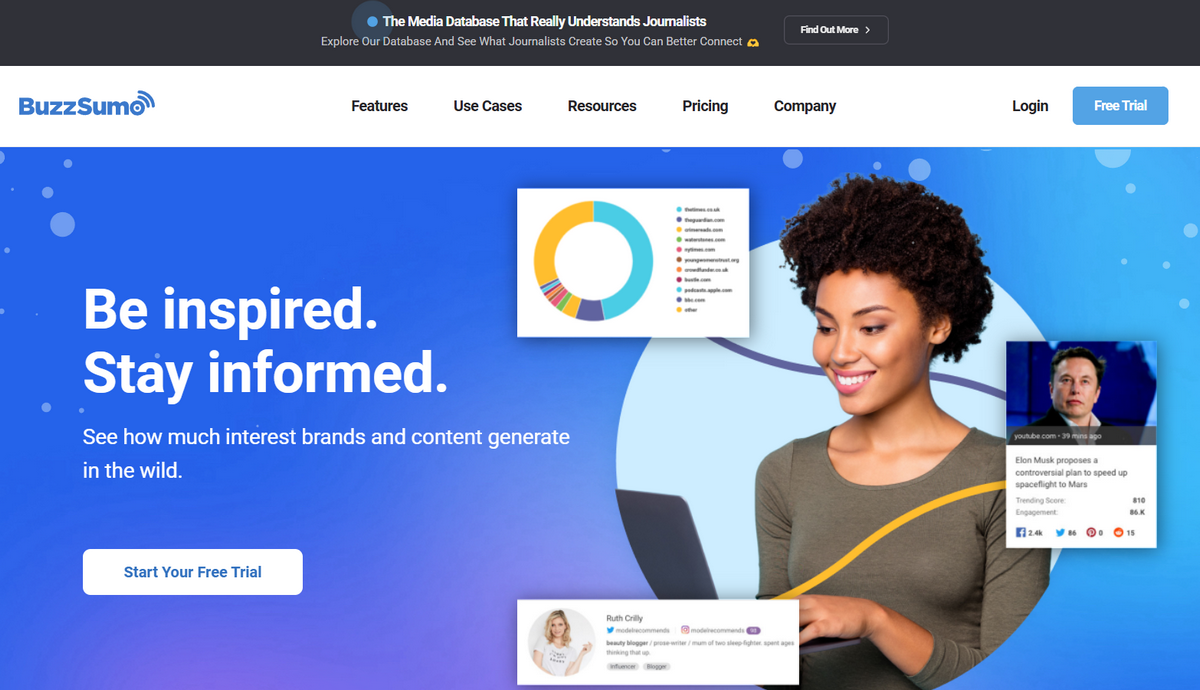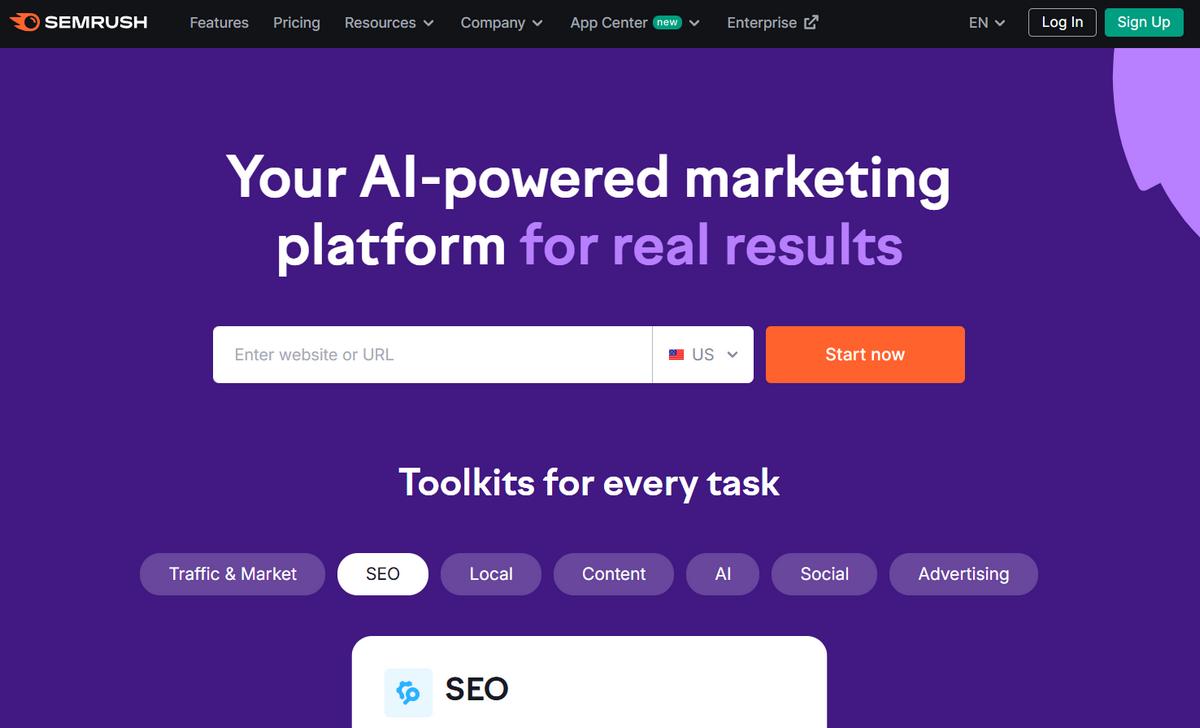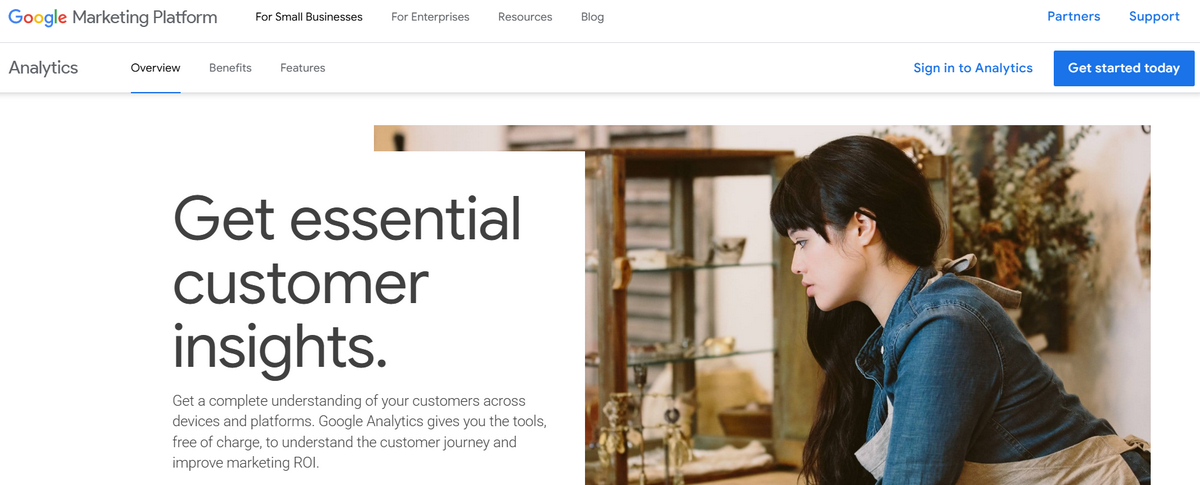Introduction
Engagement and awareness have become critical factors in the current competition-intensive landscape. All thriving brands rely on them to relate to their customers and occupy a strong position, especially during times of uncertainty and economic fluctuations.
These emotional and rational connections behind brand recognition are mainly obtained from today's digital space. According to Forbes, over 80% of consumers first research websites and social media, where they collect necessary data, before making a final decision.
A company's digital presence has become imperative to drive engagement and increase awareness. Building a brand online is the prime focus for companies that desire to maintain their communication privileges with customers and market position.
But how do you build your brand online? Here is our step-by-step guide with all the critical stages to perform and polish. But first things first. What is online branding, and why does it matter to modern companies?
Why Online Branding Matters?
Online branding implies revealing and demonstrating the company's unique personality, philosophy, vision, mission, value proposition, and ultimate goals to the target audience.
It is an ongoing process that includes creating, constantly managing, and enhancing the company's image and reputation to maintain consistency and relevancy during its growth and market evolution.
The main difference between traditional offline and modern online branding is that the latter focuses on the digital space and such communication methods as social media, websites, email channels, and online advertising. It uses visual interactions and touchpoints across multiple digital platforms to build a brand's presence and strong identity.
Importance of Building an Online Brand
Online branding has grown drastically over the years, evolving from a mere option to an absolute necessity, say experts from Forbes. It has become crucial for entrepreneurs, startups, and well-established enterprises alike to stay afloat and, most importantly, successfully pursue the company's goal, grow, and deliver on promises.
Indeed, the incredibly diverse and constantly evolving digital space, which houses billions of users across the Globe, has expanded business horizons. Whether online or offline, branding plays a crucial role in a company's coherent perception, customer trust, delivery of the key message to the right audience, and creation of a positive experience at every interaction point.
Furthermore, with so much disinformation, AI-generated content, and paid reviews and feedback, companies must protect their identity by controlling their image.
Here are some more good reasons for building an online brand.
Grab new opportunities for growth and self-realization
Online channels like social media and email present constant opportunities for building a brand online and communicating with the target audience directly and effectively. Whether on Instagram or an email channel, businesses deliver relevant and valuable messages to prospects, meeting their current demands, preferences, and expectations. This amplifies the company's presence in the market and increases its key performance metrics like conversions, sales, and revenue.
Reach expansion
Digital space is enormous. There are currently 5.5 billion internet users. It is not confined by geographical boundaries and, most importantly, sees exponential growth, which offers brands an endless stream of potential customers and partners.
With a well-built online branding strategy, companies gain access to a vast global audience. They may increase revenue, find lucrative collaborations and joint ventures, and improve their presence through networking opportunities with like-minded individuals.
Get a competitive edge
With strong online branding, companies can consistently deliver on their promises and withstand the market's dynamics, economic fluctuations, and industry disruptions. The well-built image ensures longevity, stability, and, most importantly, a competitive advantage.
Step 1: Defining Your Target Audience
So, how do you build your brand online? Here are eight basic steps.
Building your brand online starts with a thorough understanding of the target audience, as it underlies the majority of marketing and advertising campaigns in the digital space. Your market segment dictates rules for conducting campaigns in every tiny detail, from choosing the color palette for a landing page to creating an offer in a digital newsletter.
Therefore, the first step is to conduct thorough market research. This includes various activities and tools like surveys, interviews, or social listening that help companies understand their customers, prospects, competitors, and industry peculiarities. Relevant information about your target audience's demographics, behavior patterns, needs, preferences, and expectations allows you to make accurate decisions that bring value to both parties.
The basic stages of market research are defining the problem or opportunity, setting objectives, selecting a market segment, choosing the research approach, collecting, analyzing, interpreting, and drawing conclusions.
The market research stage also involves building a buyer persona. This detailed representation of the ideal customer gives companies a good idea of their target audience, relevant demands, pain points, behavior patterns, expectations from collaboration with the company, and what ticks and compels them to buy. It also discovers the challenges and obstacles that companies have to face.
Buyer personas have strategic value for companies regardless of their niche, product, or age. The more accurate and relevant this information is, the more chances companies have to emerge victorious with their campaigns and interactions with clients, ensuring their investments (time, money, and human resources) are not in vain.
Companies generally employ professional instruments and hire branding agencies to help them. The most popular tools for market research are Google Trends and Analytics, Statista, SurveyMonkey, Semrush, Typeform, and BuzzSumo. Use them with assistance from a professional brand design firm to examine the target audience and competition, visualize data, surface opportunities, and perform brand monitoring.
Step 2: Crafting Your Brand's Voice and Messaging
Dialog is a cornerstone of online communication and interaction between the company and its prospects across media platforms and digital channels. It underlies every marketing strategy, delivering the brand message and establishing strong customer relationships. To resonate with the recipients, dialog must be aligned with brand values and the audience's expectations. When potential customers feel like you are talking to them, they become more involved and committed to this relationship.
So, the next step in building an online brand is to find and craft your unique brand voice and tone and ensure consistent messaging across communication channels and interaction points.
Defining brand tone and language
Your company needs to be heard and stay coherent with the message to create meaningful connections and express its unique personality and charisma. Consider Duolingo as an example.
One of the most popular applications for learning languages has achieved incredible success globally due to its unconstrained, friendly, and entertaining game-like approach. Its well-built brand voice and tone are expressive, playful, and worldly. It perfectly supports its mission, concept, and vision and speaks to its audience in the same language.
To define your brand tone and language, companies should follow these steps:
- Clearly understand the company's personality, vision, mission, archetype, and target audience.
- Examine the best-performing content across channels.
- Use the buyer's persona as a foundation for building the correct vocabulary.
- Make a list of suggestions, dos, and don'ts.
- Determine 3-5 core characteristics.
- Document everything and create a guide.
Creating consistent messaging across channels
The first part is a well-built and properly documented brand's voice, tone, and language. Applying it across communication channels and maintaining consistency and coherence is another critical step. Companies must emphasize uniformity and coherence in tone and messaging across social media, websites, landing pages, web and mobile applications, email, customer support chats, and online advertising.
The brand style guide created at the previous stage comes into play here. It helps the company stay true to its core values across interaction points and build a brand online coherently across multiple channels.
Step 3: Visual Brand Identity and Elements
Logos, mascots, colors, fonts, imagery, animations, and tiny icons are brand identity elements imperative for a company to be correctly recognized in the sea of similar offerings. Visual identity units are crucial in revealing the company's authenticity, separating it from the competition, building brand recognition, improving recall, and leaving a lasting impression. They also help companies to cultivate trust by promoting credibility and quality.
Many elements are involved in a brand's visual identity. However, logotype, colors, and fonts are the most important as they cover the lion's share of the company's representation needs, featuring in almost every interaction point.
Designing a memorable logo
A logotype is a graphic that visualizes a company's vision, mission, and concept. It supports the brand's recognition and cultivates brand loyalty, trust, credibility, authenticity, and recall. To stand out from the crowd and fulfill its mission, it must be unique and memorable.
The best practices for creating one are:
- Make it relevant to your brand. Use design elements that hint at the company's personality.
- Stick to a scalable design to meet high and diverse standards of responsiveness and mobile-friendliness.
- Ensure simplicity and distinctiveness of details.
- Determine the right coloring.
Choosing brand colors and fonts
Did you know that 80% of consumers believe color is behind a brand's recognition? According to studies, not only does it help companies stand out from the crowd and, most also, produce the right first and last impression crucial for perception and identification. However, it should not come as a surprise, as color psychology is a serious matter that marketers and brand strategists have exploited for decades.
To find the right color scheme, follow these tips:
- Define your brand's personality and target audience's preferences.
- Consider cultural nuances.
- Focus on your archetype.
- Explore color psychology.
- Create several options and test them.
Last but not least, it is crucial to determine the correct font that is responsible for comfortable message delivery and coloring. It must be taken seriously, as it ensures optimal readability and accessibility. Like color, it should be selected depending on the company's personality and charisma.
Step 4: Establishing an Online Presence
Online presence has numerous benefits, including broader outreach, enhanced customer experience, increased engagement, improved visibility, and amplified recognition and recall. It also opens vast opportunities for directly communicating with the target audience, which results in tangible and intangible advantages, like generating conversions or reinforcing the company's reputation. It also helps the company be discovered in the first place.
When establishing an online presence, ensure a well-built website and only leverage social media to amplify the effect.
Building a professional website
A professionally built website is a solid foundation for a company's successful realization of marketing, advertising, and branding efforts. Consider it a comprehensive "business card" that demonstrates the company's personality and allows it to communicate with the target audience. It must be prioritized as a primary tool that supports all the company's endeavors in the digital space.
Your website should meet high standards, comply with laws and regulations, and provide the best user experience across devices and users' technical and personal abilities. It must have optimal readability, straightforward navigation, visually appealing design, secure and fast-loading core, responsive behavior, strategically placed call-to-action buttons, and well-built forms for conversions and inquiries.
Leveraging social media for brand awareness
Social media is essential to establish your brand online. Being ubiquitous, it has become the primary tool for communicating with the audience. It allows companies to conduct dialogues, nurture prospects, and turn customers into brand evangelists. Therefore, maintaining a consistent brand presence on social media platforms is another step.
Some good pieces of advice that help companies make the most out of these communication sources are:
- Choose social media platforms relevant to your market segment.
- Create compelling yet brand-aligned content.
- Determine the right cadence for posting.
- Use your accounts actively: participate in conversations, answer questions, and address concerns.
- Partner with influencers.
Step 5: Developing Content That Reflects Your Brand
Creating content aligned with the brand's values and mission is fundamental for an accurate and authentic company presentation. By providing value through written and visual forms, it increases engagement and satisfaction with communication.
Brand-aligned copy delivers the key message and makes customers feel connected to its personality. It enables excellent visibility in search engines and often comes off as the primary source of organic traffic.
The content marketing strategy can be divided into blogging and visual storytelling. Each one has its benefits and must, therefore, be perfected.
Blogging and thought leadership
Blogging is one of the most popular, time-proven, and increasingly practical approaches to content strategy. It allows companies to express themselves, relate to like-minded prospects, deliver value, and address pain points.
Blog publishing and guest posting help the company earn a strong reputation as a thoughtful leader in the niche, which builds authority, credibility, trust, and loyalty among community members.
One of the best professional recommendations is to create and regularly run an informative, engaging, and brand-related blog. Ensure it is built with the latest solutions and approaches so it looks, works, and behaves consistently across multiple technical environments.
Visual content and storytelling
Who does not like a story? Even the most serious sectors capitalize on storytelling, which naturally attracts and engages the audience and leaves a powerful impression. Visually appealing narrative content centered around brand values and mission is a great way to boost engagement and reinforce customer relationships.
To unlock their potential, companies are highly advised to use original imagery, illustrations, videos, infographics, and even animations while maintaining the brand's tone, voice, and visual identity. This way, they might achieve engaging, memorable, and authentic delivery.
Step 6: Utilizing SEO for Brand Visibility
Optimization for search engines is another cornerstone of well-built online branding. SEO and an online brand are a match made in heaven, perfectly collaborating to maximize each other's possibilities.
From creating keyword-based content to polishing technical details that make the website easily discoverable by Google crawlers, this stage lays a solid foundation for driving organic traffic and increasing brand awareness. Although many third-party tools assist companies in this matter, without a professional SEO specialist, it is almost impossible to achieve your goals. Therefore, ensure you have a well-versed brand design firm as your assistant during this stage.
Keyword research for brand terms
Keyword research for brand terms is one of the fundamental steps in search engine optimization. SEO specialists conduct thorough studies and comprehensive competitive analyses to identify relevant brand- and product-related keywords that help the content rank higher in the systems. They devise strategies to integrate them into the copy and blog posts and perfect the structure and technical side to make the website crawler-friendly.
Semrush, Google Keyword Planner, Ahrefs, and Moz are recommended tools for search engine optimization, monitoring, and analyzing a website's performance.
On-page and off-page SEO tactics
Apart from keyword analysis, SEO involves on-page and off-page tactics that improve website performance and increase its visibility across the web. Together, they improve ranking and build a strong brand reputation.
On-page SEO focuses on optimizing your website to produce relevant, authentic, and engaging content supplied with correctly assigned meta tags and internal links. It also includes efforts to improve the website's performance, such as increasing site speed or ensuring 100% uptime.
On the other hand, off-page SEO centers around brand promotion on other websites and platforms. It implies link-building to get more exposure and build trust and authority in the community.
Step 7: Building Trust and Credibility
Brand trust defines the extent customers believe in your company's reliability. In contrast, brand credibility demonstrates how people perceive your business regarding your ability to deliver on promises and stay true to your mission and vision.
These factors are critical for every company to build strong and healthy relationships with the community and its loyal fans. Therefore, the next step in creating an online brand is devising strategies for cultivating trust and increasing credibility, which is done through social proof and strategic partnerships.
Leveraging customer testimonials and reviews
The truth is, people listen to other people. We prefer raw and personal feedback to polished content, making customer reviews the best way to earn trust and build credibility among prospects and customers. Displaying authentic clients' opinions on your official website and social media ensures transparency, which is directly related to trustworthiness.
Therefore, actively collect testimonials and ask your customers to share their experiences on their social media accounts. Do not stop showing these reviews on your website through well-built, easily noticeable sections.
Establishing brand partnerships
Brand partnerships are another way to develop trust in prospects. Collaboration with like-minded individuals, businesses from adjacent niches with aligned values, and influencers is among the top strategies companies may adopt.
Start by identifying areas of opportunity and possible collaborations. Analyze mutual benefits and generate ideas for amplifying your presence in the market.
Step 8: Tracking and Measuring Brand Success
Tracking and measuring a brand's performance and success provide companies with a clear understanding of the real impact of their campaigns, strategies, and efforts in the digital space. It gives real insights into the current brand's position in the market and how consumers perceive the company. With a thorough analysis, you might also surface tendencies and changes in customers' preferences and needs, which are crucial for data-backed decisions and adjusting your strategies to the market in time.
Key metrics for brand performance
Start this stage by identifying key metrics for your brand performance. Depending on your niche, product, and goal, you might choose among brand awareness, perception, equity, satisfaction, loyalty, sentiment, engagement, conversions, retention, customer lifetime value, and brand mentions across the web and social media. Each one bears crucial information for portraying the brand's health and success.
Using analytics tools
The next step is to use professional instruments to track and collect data necessary for analyzing key metric performance. This task must be delegated to a professional agency, as the correct interpretation has many nuances and obstacles. However, if you are eager to try, here is the list of the most popular and trusted tools: Google Analytics, Sprout Social, BuzzSumo, and Brandwatch. Use information from those instruments to make an informed decision and refine your strategy.
Conclusion
With 85% of consumers conducting online research before purchasing, building a brand online has become crucial for companies to stay afloat. Consistent strategic online branding results in a strong online presence, which, when regularly nurtured and enhanced, helps to connect with consumers, stay relevant to their needs and preferences, generate engagement, and increase awareness.
Building a brand online might take time, assistance from a professional agency, and your commitment and devotion, but it is worth it. Ultimately, you get a solid foundation for your marketing and advertising endeavors that helps you fight competition and weather economic fluctuations, ensuring your growth and development.
Follow our step-by-step guide to navigate the nuances of building a strong online brand. Perfect every stage before moving to the next one, and get professional help to ensure a well-built online presence.
FAQs
How long does it take to build a strong online brand?
Building a strong online brand is an ongoing process that might take years. However, companies see the first signs of successful establishment in the market and improvement of their image and reputation after 6 to 12 months of rigorous work.
What are the key elements of a successful online brand?
The key elements of a successfully built online brand are a clear understanding of the brand's personality, mission, vision, value, and target audience, consistent and authentic visual identity, well-devised language, vocabulary, tone, and voice, strong mission statement, compelling and engaging content, active social media presence, strategic approach to SEO, constant tracking, and improving key performance metrics.
How do I measure the success of my branding efforts?
To measure the success of your branding efforts, it is crucial to identify the correct key performance metrics and then monitor and analyze them through professional instruments like Google Analytics, Sprout Social, BuzzSumo, and Brandwatch.
May 13, 2025





